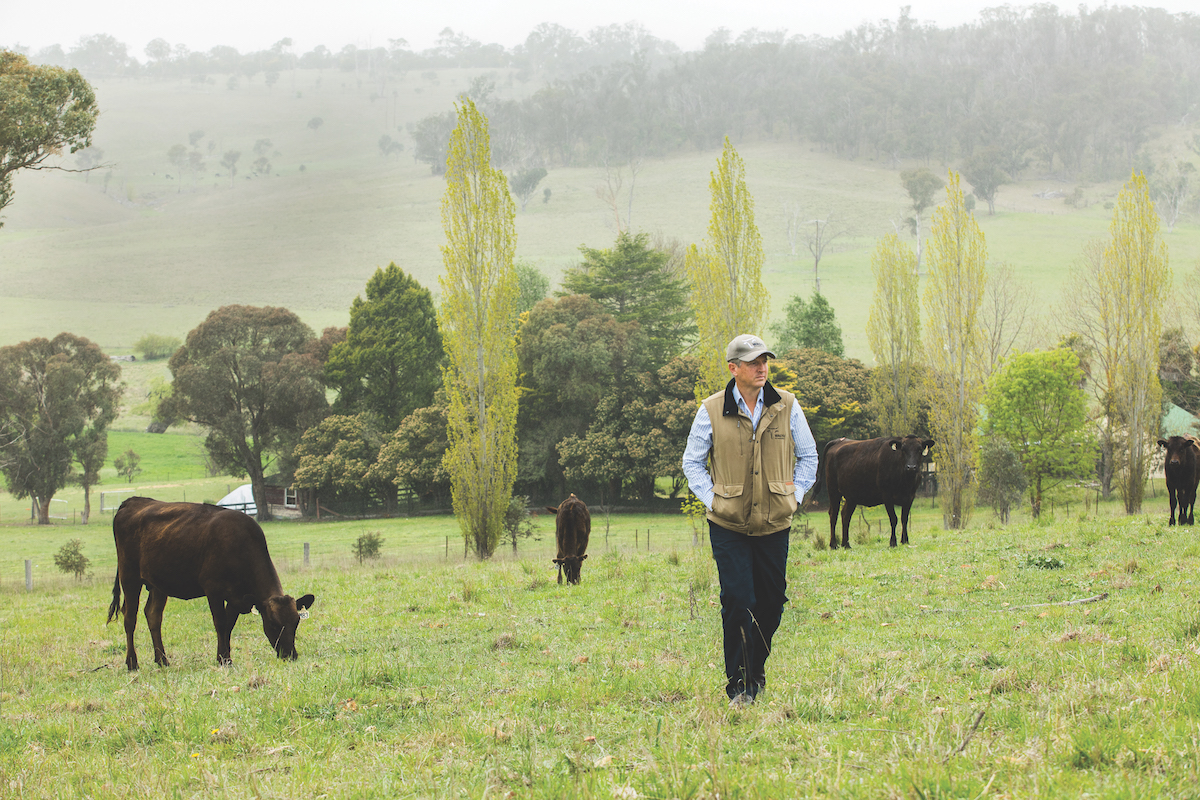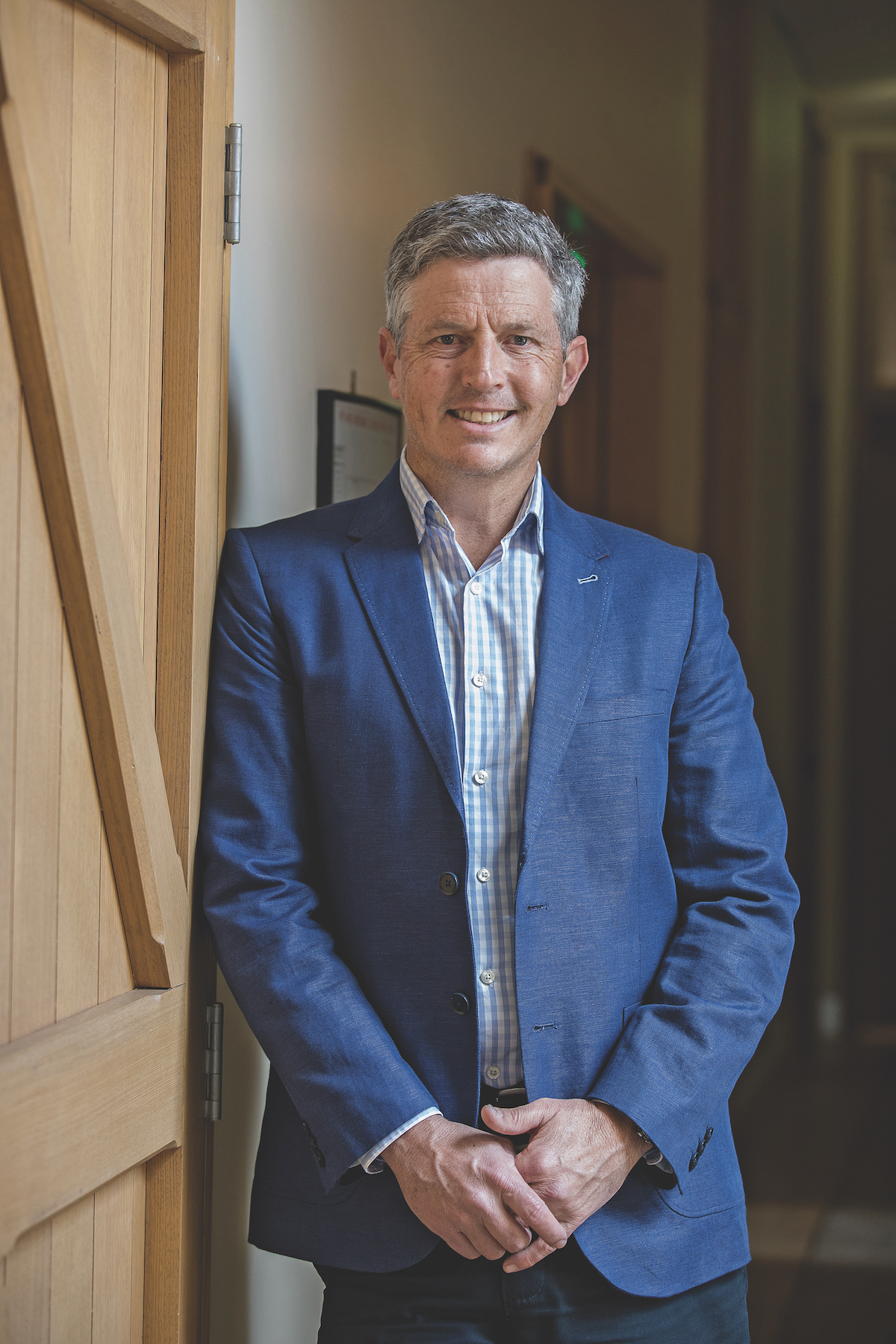Wagyu beef is synonymous with luxury meat and, for most of its history, it’s also been synonymous with Japanese farming. But the evolution of the Wagyu industry in Australia looks set to change all that. Matt McDonagh, CEO of the Australian Wagyu Association (AWA), believes that Australia will soon be able to compete with the Japanese industry as a global authority on Wagyu genetics.
“For a short period, Japan exported Wagyu genetics,” says Matt. “They’ve since ceased doing that. Our Wagyu industry is now the world’s source of genetic improvement in Wagyu. The whole world looks to us for that development and continuous enhancement.”
Though the AWA is primarily an Australian organisation, it’s spreading internationally. Of its 700 members, 100 are located overseas, in countries like New Zealand, the US, the UK, Germany, Argentina and South Africa. Matt’s mission is to ensure that a global standard of industry evolution is shared across these regions.

Matt comes from a research background in the red meat industry, so this kind of innovation has always been his goal. Throughout his career, he’d found it difficult to encourage uptake of new technology. But the unique nature of the Wagyu industry meant the AWA was the perfect environment for him.
“Everyone in the Australian Wagyu industry is looking for change and can accept change,” he says. “They’re ready to consider new innovations and the ways to implement them to improve their business. There’s a great alignment with what I do, which is to try to develop innovations and get them implemented within the industry.”
Matt’s role is therefore to help with the evolution of the Wagyu industry for its own benefit, and the AWA’s hundreds of members are the core reason for its existence. Matt describes it as a symbiotic relationship, where the AWA only grows if the industry does. By providing services and implementing research and innovation industry-wide, both the AWA and its members share in the success.
“Our role is to develop and implement new tools, technologies and innovations in our industry,” says Matt. “Industry can capitalise on this, and we benefit from its growth. We’re a member-based organisation. We’re not-for-profit, but we are about our members making a profit.”
“We’re a member-based organisation. We’re not-for-profit, but we are about our members making a profit.”
And the AWA is seeing success in its mission – in the past three years, the organisation has tripled its budget turnover, while nearly doubling its membership and production. Each year, the AWA sees at least another 100 members sign up. Though Wagyu comprises a relatively small part of Australia’s beef industry, such a large network requires a lot of coordination.
Communication is therefore integral to the way Matt leads the AWA; his philosophy is that you can never communicate too well.“We’ve got quite a job to do, bringing new members up to speed with the services we provide, and conveying the information they need to accelerate their business in Wagyu,” Matt explains.
“We need to constantly review whether those systems are still appropriate and update them as quickly as possible where we need to, so we can maintain the best possible service. In growing the business, we don’t want to alienate our members, or be unable to provide the level of service they’re used to.”
In aid of this, the AWA hosts a three-day convention every year, welcoming 500 guests from across the industry. Over the course of this conference, the organisation briefs its members on innovation in technology, farming and processing, while genetics and nutrition workshops are held between conferences to maintain members’ industry awareness. The conference is one of the largest annual events on the Australian beef industry calendar.

One standout demonstration of the Australian Wagyu industry’s continual innovation is AWA member Pardoo Beef. Owned by Singaporean businessman Bruce Cheung, the Wagyu breeder operates in the Pilbara region of Western Australia, a particularly hot, dry area where Wagyu production would have been thought unlikely, if not impossible. By tapping into a vast underground reserve of sustainable, fresh water, Pardoo has transformed the area into lush, grassy dairy land. In a state where only 5% of irrigable land is watered, Pardoo’s efforts promise to revolutionise not just the Wagyu industry, but Western Australian agriculture.
The cooperative nature of the industry extends overseas – Matt notes the closeness between international buyers and Australian producers, a result of the luxury status of Wagyu beef. “There’s a strong partnership between the brand owners and Wagyu producers,” he says.
“It ensures the consistency and quality that underpins Wagyu. These international markets really are the luxury, premium end of the beef industry. We have export markets in China, Singapore, Hong Kong, Japan, Dubai, Malaysia. These markets are the pinnacle of the Australian beef export industry.”
The degree of coordination evident in the Wagyu industry is also deeply entrenched within the AWA itself. Internally, Matt serves as the guiding force for the organisation, outlining its mission and goals, and ensuring his team is as focused on them as he is. He sees a leader as someone who must explain to every individual how they contribute to an organisation’s vision.
Matt strives to recognise the moments in which his team achieves success, so they understand the impact they have not just on the AWA, but on the Wagyu industry as a whole.
Increasingly, that impact stretches overseas, and Matt expects the AWA’s international standing to only grow. “These members come to us because we are seen as the global leader in Wagyu genetic improvement and production technology,” he says.
“It’s exciting to be in a company that has developed itself within the Australian industry, and is now being recognised globally as the world leader in the production of Wagyu genetic technology.”


